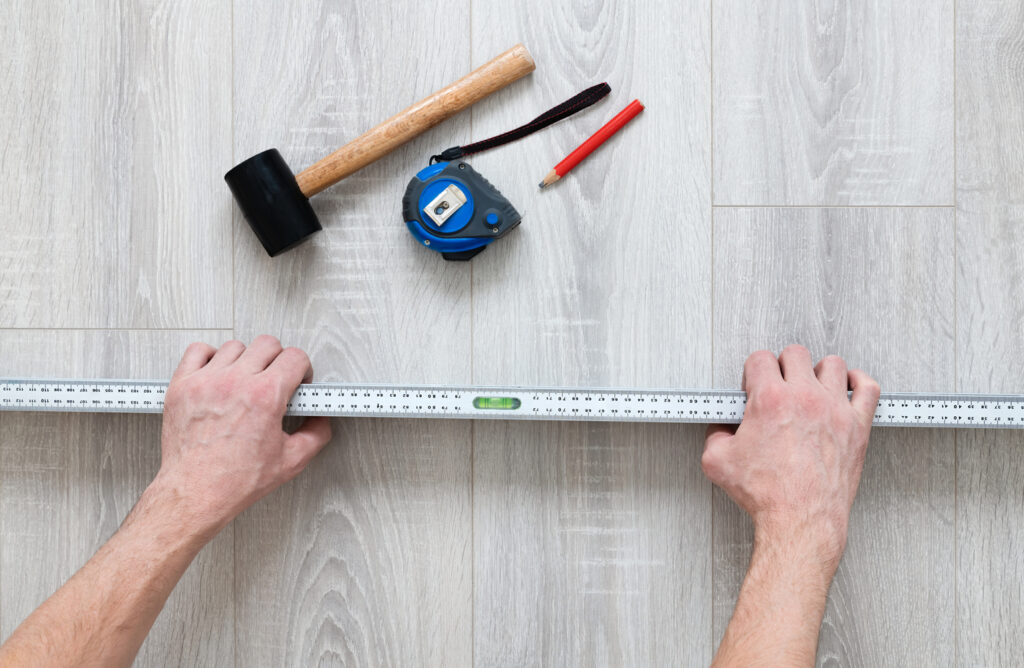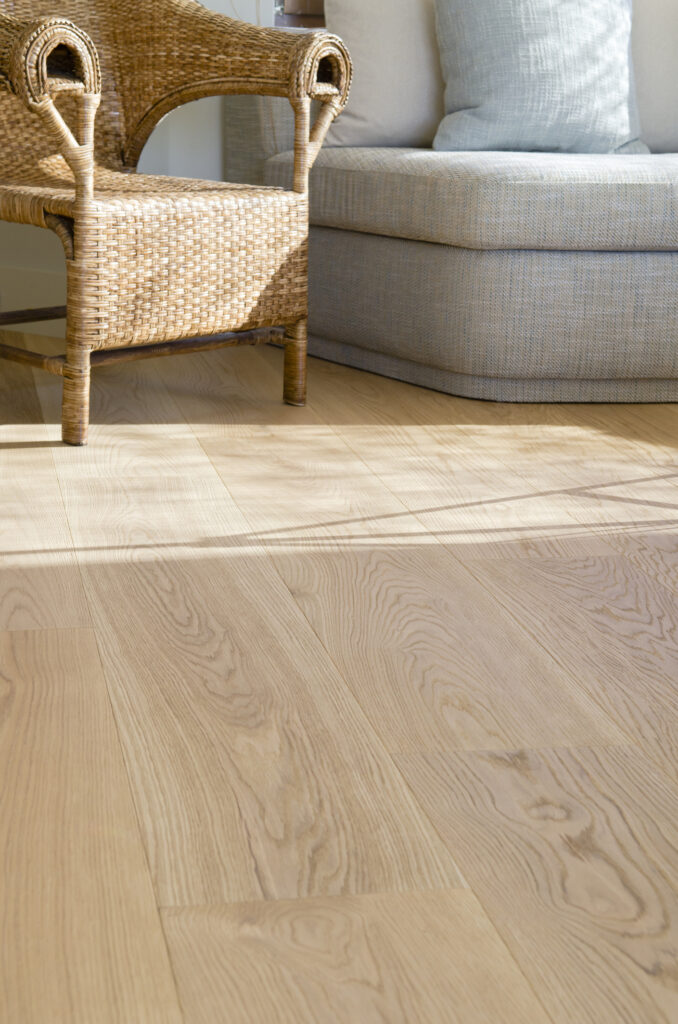
Editor: Terry Shi
The founder of FLOORCO, with a strong industry background and substantial supply chain resources.
The Ultimate Guide to Choosing Wood Flooring
The wood floor has been in the top tier of flooring in homes and offices for a very long period of time. Its eternal charm, strength, and wide available variety make it an all-in-one solution for every interior. However, it is not easy to choose what type of wood flooring is needed for the renovation or construction of your home. There are so many styles, so many types of material, and so many finishes; each has something of essence to offer. Here goes the buying guide that will walk you through everything that you should know to pick a wood flooring that focuses on your lifestyle, budget, and aesthetic preference.

1. Wood Flooring Types
Before getting into particulars, as durability and style, first learn about the different types of wood flooring. Each type has its specific pros and cons which will determine where it’s most suitable for your house.
- Solid Hardwood Flooring: Compared with engineered wood, solid hard-wooden floors are made from one piece of wood, usually ¾ inches in thickness, and can be sanded and refinished repeatedly. They become an extremely good investment due to this long life span. However, solid hardwood is more sensitive to moisture and temperature fluctuation, forbidding its installation in areas with special systems of moisture control, such as bathrooms and basements.
- Engineered wood flooring: It’s made of several layers of wood that are pressurised together with a thin hardwood veneer on top. Built this way, engineered wood is stable for areas that have fluctuations in temperature and humidity, such as kitchens or basements. Engineered wood can also be practised to mimic the looks of solid wood in a more realistic way, especially regarding price and ease of installation.
- Laminate Flooring: Laminate flooring is a cost-effective alternative to real wood. It consists of a photographic layer that closely resembles wood, along with a resilient resin coating. Not quite as durable as solid or engineered wood, this floor type is resistant to scratches and moisture, hence quite practical for the busy households or areas often exposed to moisture, such as kitchens.
- Bamboo Flooring: Biologically, bamboo is a grass that has nonetheless gained extraordinary popularity as a wood flooring material because of its environmental friendliness and unique appearance. It is considered a renewable resource-because it grows much faster than trees. Bamboo flooring is very durable. It corresponds in a variety of colors and textures.
2. Key Considerations
Many factors should be considered when choosing wood flooring so that the chosen option will meet both functional and aesthetic requirements.

- Room Purpose: If you are renovating rooms in your residence, you should understand that the requirements are going to vary. For high-traffic areas like the living room, hallways, or kitchen, you are looking for something durable, resistant to wear. Rooms with high moisture should have engineered wood or laminate, whereas solid hardwood is suitable for bedrooms and living areas where moisture is not a problem.
- Durability: There are several species of wood flooring, each with a different degree of hardness. The resistance of different species of wood to dents and to wear is monitored using the Janka hardness scale. Oak, maple, and hickory are some of the few popular types due to their hardness, while softwoods like pine may show wear sooner. Obviously, harder woods will be more appropriate for high-traffic areas, but it may mean a higher cost.
- Budget: The cost of wood flooring radically differs according to type, species, and installation methodologies. In general, solid hardwood is usually the most expensive; with proper care, it may last for decades. Engineered wood is actually its more affordable cousin, and that also gives nearly the same look, whereas laminate is considerably the cheapest, especially for big areas.
- Climate and Humidity: Humidity and moisture are an important factor in choosing wood flooring. Solid hardwood easily gives in to expansion and contraction due to temperature changes. As such, basements or places with high moisture are not well-suited for such Coyo floors. In contrast, engineered wood has many layers and is thus more resistant to climate fluctuations. Allow the wood to acclimate to the prevailing conditions of your home prior to installation to avoid issues such as warping or gapping.
3. Aesthetic Considerations
Among the major reasons why wood flooring is still a popular option is visual appeal. Choosing the perfect wood floor for one’s home is an important decision on several aspects.
- Species and Colors: Of course, the species will have a dramatic impact on the color of your floor, its grain pattern, and the general appearance. The most popular choice, oak, is versatile and able to take any stain from light, natural to rich, dark. Maple creates a light, even, more contemporary look, while walnut offers a deep, rich, luxurious look. Exotic woods, like Brazilian cherry or teak, add a much different sort of aesthetic but come in higher in price.
- Finishes and Textures: The finish of your wood floor can affect not only its appearance but also its durability and maintenance needs. A matte or satin finish can give it a more natural look, while a glossy finish incorporates shine and formality. Textures, such as hand-scraped or wire-brushed finishes, add character and can help to disguise scratches and wear.
- Widener vs Length of Planks: Wider planks provide an open floor and give a modern look, perfect for large rooms. Narrow planks have a classic traditional look. The longer the plank, the more continuous the floor will look, plus the larger the room will look. Shorter planks are more ‘forgiving’ to uneven rooms.
4. Methods of Installation
The installation method can make a huge difference in the longevity and performance of your wood flooring. Three of the most common methods include:
- Nail/Staple Down: This would be the traditional route, consisting of nailing and/or stapling solid hardwood planks to a subfloor. Although it is very durable, it requires a professional installer and can actually be quite time-consuming.
- Glue-down: This is more common with engineered wood. The planks are directly glued to the subfloor by a strong adhesive. It is best to conserve this type of installation in places that need extra stability and resistance to moisture.
- Floating Floor: This is a popular choice among handy persons, where the installation goes by interlocking the planks; no plank is attached to the subfloor. Most used in laminate and engineered wood flooring. It is quick to install and perfect for areas that may need future changes of floors.
5. Maintenance and Long life end
Wood flooring boasts of durability, but maintenance will keep it looking beautiful for the next several years.
- Scrubbing: Sweeping or vacuuming is often needed to remove dirt and debris that could scratch the surface. A damp mop, however, is used for cleaning, it is recommended not to use excessive moisture as this can cause warping of wood. Using only cleaning products that are meant for wood to not damage the finish is also advisable.
- Refinishing: Because of the nature of solid hardwood flooring, these could be sanded and refinishing many times in their lifetime. This goes back to its virgin state, where any scratch or dent marks are totally erased. Engineered wood can be refinished once or twice depending on the thickness of the top veneer, while laminated wood cannot be refinished but are readily replaced.
- Protection from Moisture: Area rugs placed at high-traffic areas and near all entries can help avoid moisture damage. Clean liquid spills immediately, and place felt pads on the legs of furniture to avoid scratching.
6. Eco-Friendly Alternatives and Sustainability

With a heightened sensitivity to environmental issues, consumers have more fervently sought out more environmentally friendly choices in wood flooring. A few of the more common eco-friendly options some consumers consider include:
- Reclaimed Wood: It also employs reclaimed wood salvaged from old buildings or structures, adding a touch of environmental responsibility within your home. It’s unusually unique, rustic, and charming. Each reclaimed wood has a story to tell, offering characteristics that no new wood could provide.
- Bamboo Flooring: Bamboo is a highly renewable resource, growing much faster than traditional hardwoods. It’s also extremely durable and resistant to moisture, making it a very eco-friendly and practical option.
- FSC-certified Wood: For new wood flooring, one may opt for those products bearing the FSC certification provided by the Forest Stewardship Council, as this ensures that the wood was sourced from responsibly managed forests. This kind of certification surely means that stringent standards have been met regarding the environment and social concerns during its production process.
7. Conclusion
Choosing between wood floors is an investment in the beauty and functionality of your home. With a little consideration of the species, room function, climate, and budget, you’ll be able to choose a wood floor that enhances your aesthetic tastes while satisfying your practical needs at the same time. When appropriately maintained, a wood floor has the potential to last you a lifetime, hence joining those building supplies that will add value to your house for many years to come.

From rustic to elegant, low-budget to luxurious, Floorco carries a wide variety of wood flooring to suit any style. Whether you physically visit our store or browse through our online collection, we have the perfect wood flooring for your space.
References
- Forest Stewardship Council (FSC), 2021. Sustainable Forest Management and Certification. Available at: https://fsc.org.
- Government of New South Wales, 2022. Flooring and Building Materials: Guidelines for Sustainable Choices. NSW Environment Protection Authority. Available at: https://epa.nsw.gov.au.
- National Wood Flooring Association (NWFA), 2023. Wood Flooring Durability and the Janka Hardness Scale. Wood Flooring Technical Journal, 18(2), pp. 12-19. Available at: https://nwfa.org.
- US Environmental Protection Agency (EPA), 2023. Sustainable Materials Management: Flooring Options and Environmental Impact. Available at: https://epa.gov.
- Australian Government Department of Climate Change, Energy, the Environment and Water, 2022. Sustainable Timber and Flooring: A Consumer Guide. Available at: https://environment.gov.au.
- Wilson, M., 2023. Moisture Resistance in Engineered Wood: A Comparative Study of Modern Flooring Solutions. Journal of Environmental Building Materials, 24(3), pp. 44-50.
- Smith, L. & Johnson, T., 2021. The Long-Term Impact of Refinishing and Maintaining Wood Flooring in Residential Properties. Journal of Residential Construction and Materials Science, 15(4), pp. 98-105.
- Jones, A., 2022. Engineered vs Solid Wood Flooring: Comparative Performance in Humid Environments. Journal of Building Materials Research, 29(1), pp. 77-84.
- UK Government, 2023. Flooring and Home Renovation: Environmental Standards and Recommendations. Available at: https://gov.uk.




